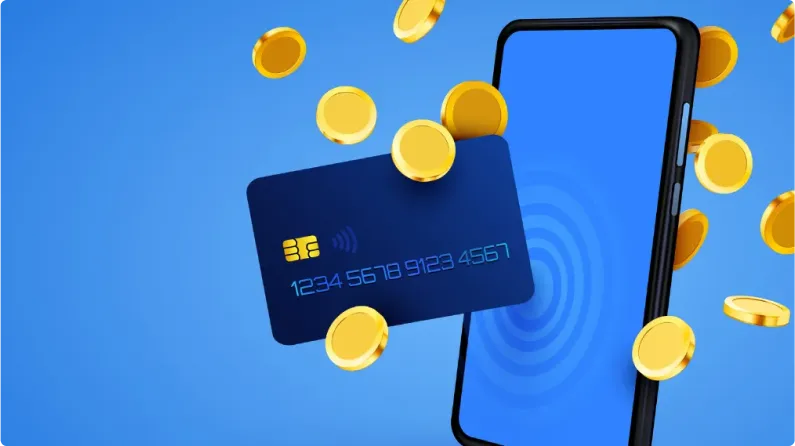Your Ultimate Guide to Virtual Prepaid Reward Cards – Instantaneous, Secure & Convenient Gifting
Discover everything you need to know about virtual prepaid cards. Learn about their types, benefits, and why they are the future of rewarding, incentivizing, and engaging employees, customers, and partners quickly and securely across the globe.
On this page
- What is a virtual prepaid reward card?
- Types of virtual prepaid cards
- Virtual prepaid reward cards vs. physical prepaid reward cards: Which are better?
- Benefits of virtual prepaid reward cards
- How can companies use virtual prepaid reward cards for rewarding and incentivizing?
- Step-by-step guide to send virtual reward cards to your recipients with Xoxoday Plum
- Conclusion
A study by Straits Research reports that the global prepaid card market size was valued at USD 3.36 trillion in 2024 and is projected to reach USD 12.67 trillion by 2033, growing at a CAGR of 15.9% during the forecast period.
Even though gift cards are still widely used for rewards, they are losing their touch.
According to a 2024 survey by Bankrate, 43% of U.S. adults have at least one unused gift card, gift voucher, or store credit, with an average value of $244 per person. This amounts to approximately $27 billion in unspent gift card value nationwide.
There might be many reasons for this, but one of the most obvious ones is that gift cards don’t give recipients the freedom to buy whatever they want from wherever they want. Virtual prepaid reward cards are capturing this gap. Virtual prepaid reward cards are widely accepted; they offer freedom of choice, can be reloaded, and more. Now, this sounds cool.
Diving a bit into their history, the first prepaid cards were the same old gift cards with slight changes. According to a report by Moorwand titled “The History of Payments: The rise of Prepaid Cards”, the telecom industry first adopted them to incentivize employees, followed by big retail chains. However, with time and a rise in popularity, these prepaid cards have evolved into smarter, much more beneficial versions of themselves called virtual prepaid cards.
Virtual prepaid cards have been mass adopted by corporates, businesses, etc., simply because they are convenient to issue and easier to use by the end customer. And yeah, they are miles ahead of their primitive gift card ancestors.
What is a virtual prepaid reward card?
A prepaid card issued by a financial institution allows a person to spend a pre-loaded/pre-deposited amount of money, which can be reloaded again once used.
Just like a regular debit or credit card, a prepaid card has a unique 16-digit number, a CVV, and requires a PIN to operate. The only difference is that a prepaid card is not directly linked to a bank account and has to be reloaded with money separately, which makes it more secure. Also, unlike a gift card, a prepaid card can be used everywhere a standard debit/credit card transactions work. So it is more convenient as well.
The virtual version of this prepaid card is a digital counterpart of the physical prepaid card that you can email to the recipient or add to the recipient’s mobile wallet. The recipient can use it just like a debit card online or in a physical store at their convenience.
When it comes to rewarding, prepaid cards are a great choice. Think about it; who wouldn’t like a reward that gives them the freedom to purchase whatever they want, instead of a gift card that works who knows where? A virtual prepaid reward card is just like a cash reward but is much more secure and convenient.
Types of virtual prepaid cards
Based on the senders’ requirements and budget, there are various types of virtual prepaid cards. These vary in features and benefits, and one can pick a type that best suits their needs. However, with many companies offering loads of options, it might get tricky to understand the main differentiating factor. So let us solve that for you.
There are broadly five types of virtual prepaid cards:
Open-loop virtual prepaid cards
Open-loop cards are the most flexible virtual prepaid cards with the broadest appeal. They are general-purpose charge cards with universal acceptability (everywhere the issuing card network is accepted - Visa, Mastercard, etc.). As a result, virtual open-loop prepaid cards open up a comprehensive gateway for e-commerce; it’s like giving the recipient the freedom to buy whatever they want from the world’s largest shopping mall.
Some examples of open-loop prepaid cards are Visa Card, MasterCard, American Express, Rupay Card, etc.
When incentivizing employees, customers, sales teams, channel partners, or gig workers, deploying open-loop virtual prepaid cards is a dependable route. If you run a multi-national company with employees working across the globe, these open loop cards are a real savior for rewarding. As they save you the hassle of selecting different gifts across geographies.
Besides rewarding, open-loop virtual prepaid cards offer a couple more promising use cases for businesses:
- When employees travel abroad, you can give them virtual prepaid cards to manage their day-to-day expenses. Your finance team can issue cards with a limited amount; once exhausted, the team can reload the cards (if reloadable) with an additional sum.
- You may like to issue such cards to your sales and marketing teams on a monthly budget basis. Virtual prepaid cards highly reduce the chances of misuse or fraud, which is quite a possibility with credit cards.
Closed-loop virtual prepaid cards
Close-loop virtual prepaid cards, also known as single-purpose cards, can be used to make payments digitally at a single retailer/company or in a physical store. A business generally offers these cards by partnering with a financial institution for issuance. Most of the time, such cards bear the company's logo for brand awareness.
Businesses issue closed-loop cards to bring in new customers and, simultaneously, build customer loyalty. For this, they offer various discounts to customers using their closed-loop card so that they keep coming again and again. Offering a closed-loop prepaid card is a good strategy for small businesses in the customer-acquiring phase.
A closed-loop card might sound attractive from a business perspective, but it is not that good of a choice while rewarding. There’s a chance that the recipient is not a fan of the brand, which means that the reward will not be of much value to them. The constricting nature of a closed-loop prepaid card makes it an unpopular gifting option.
Other examples of closed-loop prepaid cards are the Shell Card, the Starbucks Card, the Target RedCard, the Walmart Gift Card, and the Apple Card.
Semi closed-loop virtual prepaid cards
Semi closed-loop virtual prepaid cards, also known as multi-merchant reward cards, allow the recipient to spend on a specific category or group of merchants. They are network-branded, which means they are affiliated and accepted by numerous merchant/chain outlets digitally as well as in physical stores. This feature also gives them the name ‘restricted open-loop cards.’
They are issued directly by retail chains or brands and can be used to purchase from all the affiliated merchants. However, sometimes, instead of particular brands, these semi closed-loop cards are accepted for specific categories like groceries, accessories, etc.
Rewarding someone with a closed-loop prepaid card is a good option if the recipient often spends on a specific group of brands or a category. It’s like saving them extra cash to spend on everyday things. It’s cherry on top if you know what they spend on. The card’s virtual appeal lets the recipient pay for whatever they like from the comfort of their homes.
Knowing all the rewarding options available in your rewards program manager is always better for getting the best results. You may have a selection of pre-filtered, themed card options, or you may be able to create your brand-personalized card. The latter gives you much more creative latitude and adds a personal touch.
Based on the frequency of usage, virtual prepaid cards are divided into:
Reloadable virtual prepaid cards
Reloadable prepaid cards, also known as general-purpose prepaid cards, allow the issuers/users to reload money onto it once it gets over. This means users don’t have to worry about getting a new one once the previous card finishes up.
A reloadable virtual prepaid card is not linked to a bank account and must be ‘loaded up’ separately with a certain amount of money. This feature ensures that the user spends within a given limit. You can track your expenses on the virtual prepaid card’s dashboard and load it once the balance finishes up.
Reloadable virtual prepaid reward cards are suitable when you have to reward the same person often.
Non-reloadable virtual prepaid cards
Non-reloadable prepaid cards don’t allow the issuer/user to reload them once the money gets over. It is more like a gift card that can be used everywhere the card network is accepted. It makes a good one-time reward but is not a part of the long-term game.
It depends on the businesses and users to choose which card fits their requirements. So, naturally, each of them has its own benefits. However, a virtual prepaid card definitely has some unmissable advantages under its belt, which we shall discuss now.
Virtual prepaid reward cards vs. physical prepaid reward cards: Which are better?
Here are the key differences between virtual and physical prepaid reward cards:
Area of Difference | Virtual Prepaid Reward Cards | Physical Prepaid Reward Cards |
Delivery Turnaround Time | They are issued instantly and received immediately via email or mobile wallet. | They take time to get issued, and one has to wait a long time for card delivery via post. |
Disbursal Time | Disbursal is instantaneous as the recipient's geographical location isn’t a factor in delivery. | Disbursal is inconvenient for a recipient living in a remote area. |
Ease of Carrying | Since they are available virtually, the card cannot be misplaced. | The chances of a physical card getting misplaced are comparatively very high. |
Extra Costs | No additional production or delivery cost is required. | Production and delivery charges are added to the total cost. |
Convenience | A virtual card is convenient to use by the sender as well as the recipient. | Using a physical card is less convenient and more time-consuming. |
Bulk Delivery | Virtual cards can be quickly sent to many recipients in bulk at once. In fact, one can request discounts for a bulk purchase. | Batch processing and delivery of physical cards is a hassle. |
Security | The chances of fraud are significantly reduced with a virtual card. | There’s a high chance of fraud with a physical card. |
Burden on Environment | Virtual cards are environment friendly. | The production and transportation involved in making and delivering a physical card make it unfriendly to the environment. |
Automated Payrolls | Virtual cards are great for sending out remote payrolls to gig workers, contractors, freelancers, etc. It can be automated as well. | It’s not possible to swiftly reward gig workers and freelancers as they achieve the day’s goal or submit a project. |
Benefits of virtual prepaid reward cards
Now that we have seen how virtual prepaid reward cards make a much better rewarding option than their physical counterparts or regular gift cards, we look at the benefits. From convenience to implementation to branding, virtual prepaid cards make an excellent choice for businesses and recipients.
Benefits for you:
- Convenience
All you need is a list of email addresses of your recipients and a good rewards partner, and your rewards can be sent out in a matter of minutes. - Reward any value
Unlike gift cards with fixed amounts, you can load any amount of your choice on a virtual prepaid card. You can also develop different programs for different recipients without overshooting your budget. - Financial inclusiveness
Virtual prepaid cards don’t require recipients' bank account details or credit history, making them financially inclusive and easier to reward everyone. - Quicker implementation
Setting up a virtual prepaid reward program takes less than 24 hours—no weeks of production or shipping delays. - Easy branding
You can add your brand’s logo, tagline, and colors to the virtual prepaid reward cards for brand awareness. - Campaign analysis
Partners like Xoxoday Plum provide detailed metrics, allowing you to track campaign performance and optimize future programs.
Benefits for your recipients:
- Easier to use
The recipients can tap these virtual cards just like regular debit/credit cards using their mobile phones at the payment receiving instrument. - Faster to use
Recipients find virtual prepaid cards much quicker to use compared to physical cards because they are digitally convenient. - More secure
Virtual prepaid cards are more resistant to fraud, cannot be cloned, and are safer than physical items. Non-reloadable cards expire after one-time use. - Immediate support
Card-issuing companies guarantee quick support if there are issues, enhancing recipients’ reward experience. - Controlled spending
Recipients can only spend up to the loaded amount—no risk of overspending. - Web and app support
Recipients can check balances and manage cards easily via web and mobile apps.
How can companies use virtual prepaid reward cards for rewarding and incentivizing?
After understanding all the benefits in the above points, it becomes evident that companies/businesses can extensively utilize virtual prepaid cards for incentivization. They benefit both the business and the recipients in many ways.
Here’s a small guide on how to incorporate virtual prepaid reward cards in your incentivization program:
1. Employee incentives
There is an excellent possibility that employees would be happier to receive virtual prepaid reward cards as incentives. Moreover, It is a quick and convenient way to express care and gratitude. Additionally, the unique tracking feature with a virtual prepaid reward campaign is a great way to track campaign performance and corporate expenses. One can give rewards on multiple occasions:
- You can organize quizzes and contests for team-building and award these virtual prepaid cards to the winners.
- Monthly or yearly employee bonuses can very easily be transferred using virtual prepaid cards.
- A certain amount can be rewarded for every employee referral made using the prepaid card.
- To ensure your employees are upskilled, you can transfer specific amounts to their prepaid cards when they achieve a performance milestone.
- Employees can be incentivized to achieve specific targets in industries focusing on goal-based work using virtual prepaid cards.
- To develop a feeling of belonging amongst your employees, you can give out rewards on special occasions like birthdays, wedding anniversaries, work anniversaries, etc.
- You can reward them to your old employees for their long service to the company.
Usual budget range: Employee incentives usually range from $10 to $1000, depending on the occasion they are being given.
2. Customer incentives
Giving out customer incentives is a widely used marketing and customer retention strategy. Adding a touch of virtual prepaid reward cards can work out well. These rewards will give the customers more freedom and convenience while spending, ultimately attaching them to your brand.
Here are a few ways in which you can use virtual prepaid cards for customer incentives:
- You can utilize virtual prepaid cards in your consumer promotions strategies and watch your businesses grow!
- They make great options for sweepstakes/giveaway rewards.
- Customers’ virtual reward cards can be loaded with a certain amount for filing customer surveys or giving reviews and feedback, enhancing your business portfolio.
- Virtual prepaid cards are a fantastic way to garner customer referrals.
- Account Managers can guarantee that the revenue stream is incoming, develop strong relationships with customers, and ensure that the potential is maxed out by running ABM campaigns with the help of virtual prepaid cards.They can be sent out as a part of email marketing campaigns to your top customers.
- Virtual prepaid reward cards are an excellent way to send out rebates and rewards as a part of your loyalty programs.
- You can also be a part of the customers’ life by sending them virtual prepaid cards on special occasions like birthdays, festivals, anniversaries, etc.
Usual budget range: "What you’re willing to spend often ties heavily into who you’re trying to move and what behaviors you’re driving with your target audience. That number can often be drilled down to between 1% and 3% of the gross revenue of the target market or product."
3. Sales and channel partner incentives
A virtual prepaid reward system is a great way to incentivize your sales and channel partners. They are the backbone of your business, and compensating them so they are happy will only benefit you. Therefore, building a robust channel sales reward model is very important, efficiently using the virtual prepaid rewards system.
These virtual prepaid rewards systems in the following ways:
- Sales partners can be incentivized when they achieve their monthly or yearly targets. Giving out rewards regularly will keep the sales partners motivated to work.
- Your reseller partners are essential to your business. You can incentivize them using virtual reward cards to maintain better relationships and utilize your partnership to the fullest potential.
- Very often, businesses have many affiliates who are bringing in the traffic. In such cases, it becomes challenging to maintain a rewards program. However, you can easily set up and maintain a virtual prepaid rewards program for all your affiliate partners.
Usual budget range: These incentives can range from $100 - $10000, depending on their performance and how important a role they played in growing your business.
4. Gig worker incentives
It’s quite possible that not all your employees work full-time with you. Businesses tend to have part-timers, gig workers, or people on a contract basis. These unconventional employees with smaller salaries can be quickly paid using virtual prepaid reward cards. As they aren’t part of a regular payroll, their salaries can be sent out in the reward cards whenever required.
Gig workers can be paid using a virtual prepaid reward card when they:
- Complete an assignment
- Achieve Performance-based KPIs
- Take a step ahead by driving business ideation
- Go an extra mile with their projects, and perform exceptionally well
Usual budget range: Gig worker incentives depend on the task size and how well it has been executed. However, it usually ranges from $5 to $500.
To understand how you can streamline your gig workers’ incentive program, check out how you can delight your gig workers with instant gratification with Xoxoday Plum.
Step-by-step guide to send virtual reward cards to your recipients with Xoxoday Plum
Sending your recipient's virtual reward cards using Xoxoday Plum is a simple, mapped process. Follow this step-by-step guide to roll out an effective campaign:
1. Have clear goals
Before deciding on anything about the virtual reward program, decide on the goals. Allow these goals to steer your campaign. There can be multiple goals like expressing gratitude & care, consumer promotions, incentivization, or more.
2. Study the recipients’ persona
The recipients of your virtual reward card program can be your employees, customers, sales teams, channel partners, gig workers, etc. You may want to look closely at what can help you orchestrate their behaviors.
3. Set a budget
No one wants their reward program to become a liability; it should be beneficial in the long term. Having an idea about the reward program's scale and the resources available to one can set a budget accordingly.
4. Find a virtual prepaid reward card partner
Finding the right rewards partner is a crucial step in the process. One can look at multiple factors - convenience, GDPR compliance, promptness, support, bulk discounts, easy-to-use platform.
5. Select the prepaid cards
The most common confusion at this step is which network to choose: Visa, Mastercard, or any other. Good partners shall make it easy to make the right choice.
6. Prepare a media toolkit
Picked out a virtual prepaid card? It’s time to let everyone know. Prepare an impactful media toolkit to let your employees/customers/partners know about the reward system. This makes the program look more professional and inviting. It also generates excitement amongst the recipients and motivates them to work better!
7. Create the campaign with your Rewards Card Partner
Your rewards card partner can assist you with the campaign. For example, Xoxoday Plum ensures that you don’t feel stuck at any point of your reward campaign and is there with you through every leg of the process.
8. Roll out the program
It’s time to implement it all! However, don’t be in a hurry and send the virtual reward cards without any message. To make the reward more thoughtful, write an email and tell the recipient why they are receiving it, add a compliment and make them happy. This little touch of personalization goes a long way.
9. Analyze the program
After launching the campaign, it’s important to analyze its performance. This data is instrumental when you plan future campaigns.
Conclusion
Virtual prepaid cards have revolutionized the way businesses reward, incentivize, and engage globally. Offering unparalleled flexibility, security, and convenience, they empower recipients with the freedom to choose how they spend, while eliminating many of the limitations associated with physical cards.
Thanks to their easy distribution, fast implementation, and seamless tracking capabilities, virtual prepaid cards are now among the most efficient and effective tools for modern reward programs. With the right partner, managing a virtual prepaid reward program becomes even simpler and more impactful.
If you’re looking to scale your rewards strategy with ease and efficiency, Xoxoday Plum offers everything you need. From virtual prepaid Visa® and Mastercard® options to a powerful, easy-to-use platform, Xoxoday Plum helps you design, distribute, and track your global payouts effortlessly. With real-time tracking, custom branding, and dedicated support, you can elevate your entire rewards experience while staying cost-effective.
Book a free demo with Xoxoday Plum and see how virtual prepaid cards can transform your global payouts.


















